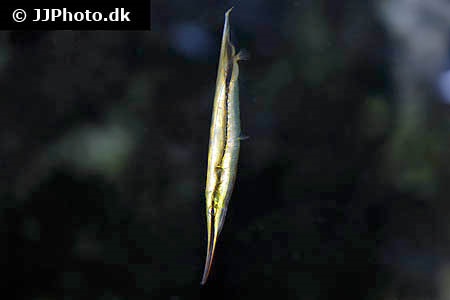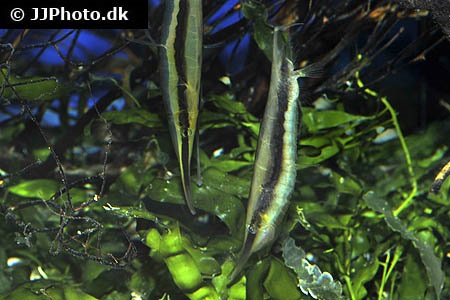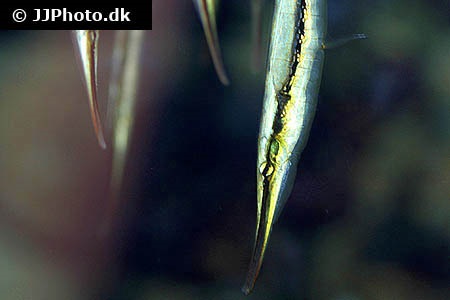Aeoliscus strigatus
| Latin name | Aeoliscus strigatus |
|---|---|
| Local name | Striped Shrimpfish |
| Family | Centriscidae - Aeoliscus |
| Origin | East Indian Ocean, West Indian Ocean, The Red Sea |
| Max length | 15 cm (5.9") |
| Minimum volume |
200 l (53 gal) |
|---|---|
| Hardiness |
Average |
| Suitable for aquarium |
Suitable for special aquariums |
| Reef safe |
Always reef safe |
| Aggressiveness | Peaceful |
| Recommended |
Fish Small crustaceans (Krill, mysis, artemia...) Zooplankton (Cyclops, pods...) |
|---|
This species requires feeding 4 or more times a day.
This species often becomes malnourished in captivity, it is therefore important to enrich their food with omega-3 and vitamins.
This species must have live food in order to survive for any length of time in the aquarium.
This could consist of live Artemia (Brine shrimp) or similar.
This species thrives best when there is a sufficiently large amount of micro life (copepods, amphipods or similar) in the aquarium, so that the it can always find their own food.
This species thrives best in an aquarium with overhangs and caves.
This species thrives best if it is kept in a group of five or more individuals.
Shrimpfishes (Centriscidae) have a very characteristic way of swimming where they stay vertical whilst having their heads pointed downwards.
They have similar needs to Pipefish, to which they are related. It is easiest to keep them in a small aquarium with gentle water circulation and without food competitors, predatory fish, crabs or similar.
As Shrimpfish do not often eat frozen food, it is important that they are fed live feed, if there isn't enough zooplankton in the aquarium it self. This could be enriched live zooplankton, or fish fry.
They must be fed continuously, so if there are not enough zooplankton in the tank, an automatic feeder for live food could be necessary.
Shrimpfish should be kept in a small group and are not normally aggressive towards other fish.
Scott W. Michael. 2001. Reef Fishes volume 1 - TFH Publications / Microcosm Ltd. - (English)
Bob Fenner. Shrimpfishes, Family Centriscidae, Darlings of the Public Aquarium Interest - Wet Web Media - (English)
2009. Care of Striped Shrimpfish - Reef Central - (English)




